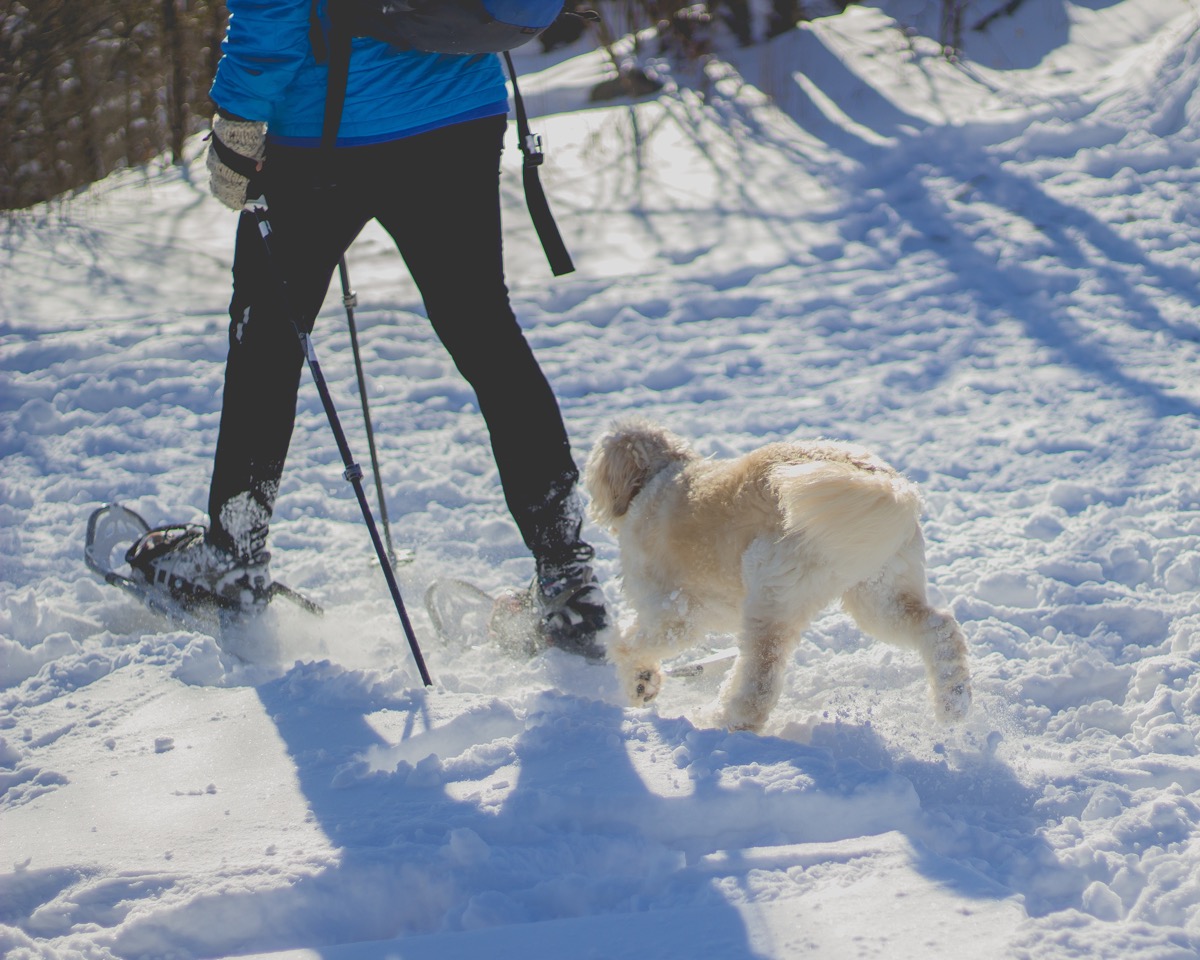We have a saying: There’s no such thing as inappropriate weather, only inappropriate clothing.”
Outdoor Fitness is an all-season, all-climate workout program. Changing seasons offer new stimulation for your body, your mind, and your senses. The variety and fluctuation of the weather and seasonal changes keep you challenged, enhancing the pleasure of exercising outdoors.
Fluctuations is weather pose challenges and sometimes hazards. In seasons that include severe weather—cold temperatures, or high altitude—you’ll need to put your body through a period of adjustment, or acclimatizing, as you gradually help your body to grow accustomed to the conditions.
Keep it Safe
The key to staying safe and having fun exercising outdoors in winter is to be aware of the obstacles and potential hazards that the elements pose—and to prepare yourself to avoid them. Here, we have strategies for you to workout safely and comfortably no matter what the forecast.
Cold Weather Tips
Winter can be an invigorating time to exercise outdoors. Snow-capped mountains, glistening hillsides, and crisp cool air are enticing. However, cold temperatures, snow and ice all pose risks you need to prepare for.
Keys to winter safety
• Wear all-terrain or light hiking shoes.
• Limit your time outdoors if you’re not conditioned for the cold—don’t stay out all day
• Have a change of clothes for after your workout
• Have access to a shelter
• Choose alternate routes if your regular route seems risky. Consider shorter loops, rather than traveling far from your starting point.
• Wear brightly colored clothing to be visible to drivers
• Use caution on snow-covered surfaces, which may be hiding obstacles—pinecones, rocks—underneath
• Carry a cell phone
Stay Warm
Maintaining your body heat is the first priority in cold weather exercise. If you keep a healthy core temperature, the cold around you will have little effect on either your health or your performance. A drop in core temperature can lead to hypothermia, which is when your body begins to generate heat by excessive muscular oscillation.
Hypothermia is marked by these symptoms:
• Shivering
• Cold feeling to the core, with goose bumps, then confusion and numbing
• Loss of coordination and sluggishness
• Difficulty speaking, mental confusion and stumbling
• Unconsciousness
Dress Appropriately
Dressing appropriately is the best defense against a drop in your body temperature, and the ticket to a great workout in chilly weather. Cold-weather dressing is all about layers and fabrics. Avoid wearing cotton, which loses up to 80 percent of its insulating capabilities when it’s wet. Cotton clothes can actually contribute to hypothermia. Technical fabrics are created specifically to function in cold temperatures. Follow these guidelines for maintaining your core temperature and protecting your body in cold weather:
• Layer clothing: Several thin layers work better than one heavy layer. Layers are also easier to add or remove to regulate temperature. The goal is to keep warm, minimize sweating, and avoid shivering
• Cover your head: Up to 50 percent of body heat can be lost through your head. Always wear a hat or headband.
• Wear gloves: To insulate and protect your hands, choose lightweight gloves that provide the greatest warmth and flexibility, preferably with rubberized or leather strips on the palm for gripping props.
• Cover your mouth: A scarf or mask will help to warm the air before you breathe it. This is especially important if you have respiratory problems, such as asthma, which are irritated by cold air.
• Stay dry: Wet, damp clothing—from either perspiration or precipitation—significantly increases heat loss.
• Keep your feet dry: Choose socks made of polypropylene, wool or another fabric that wicks moisture and retains insulation when the feet get wet.
• Wear sunglasses: Select lightweight shields with UVA and UVB protection. Some styles have interchangeable lenses for sunlight, flat light and foggy conditions.
• Stay hydrated: Dehydration affects the body’s ability to regulate heat. Fluids—especially water—are as important in cold weather as in hot weather. Avoid alcohol and caffeine, which dehydrate your system and constrict your blood vessels.
Back To Blog

